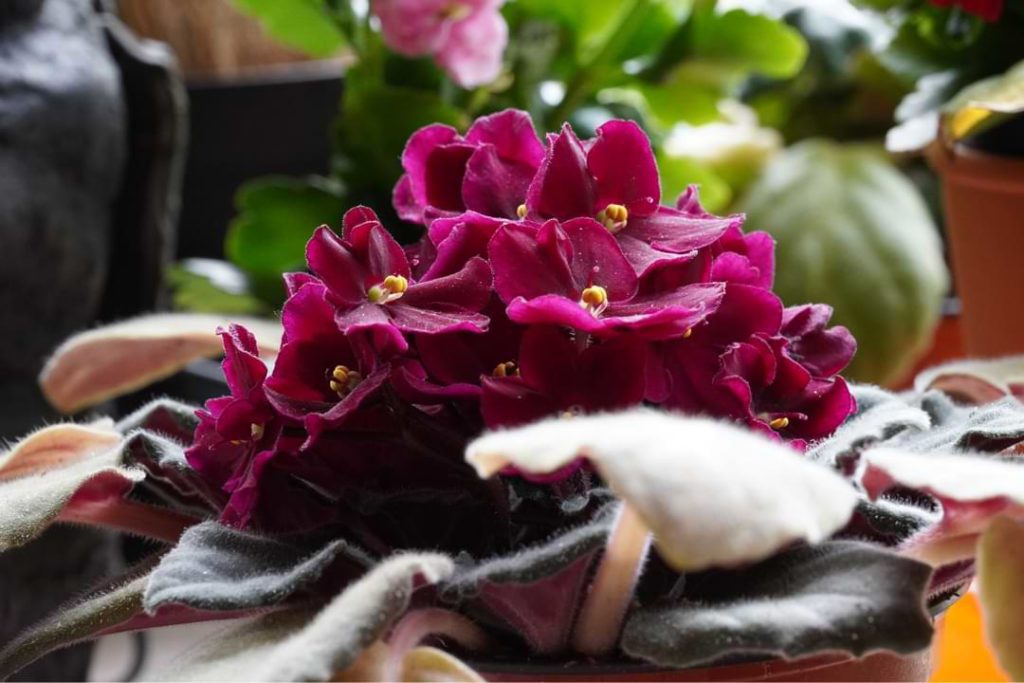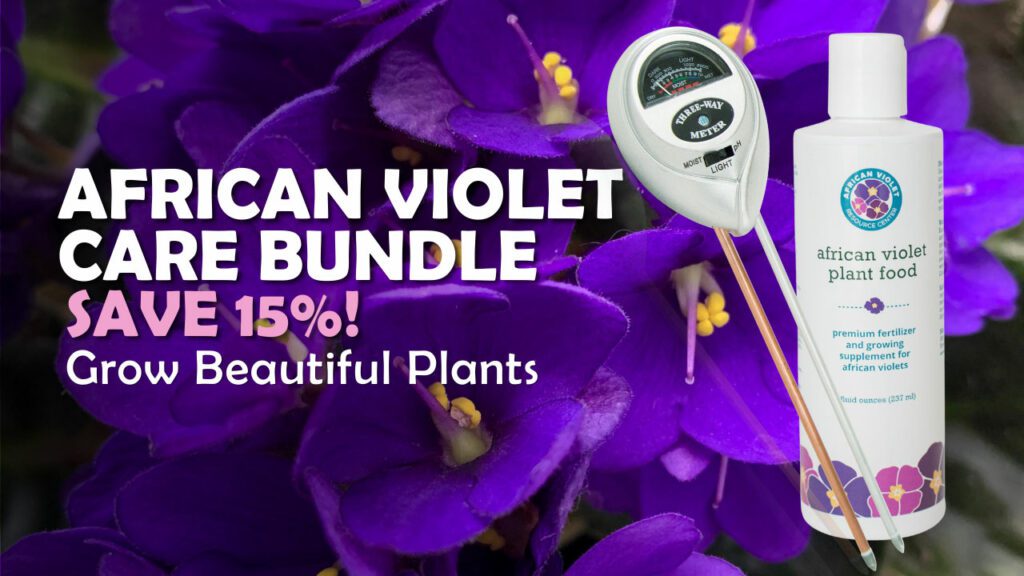Unpacking the Plant World’s Most Controversial Question
African violets are known for their vibrant foliage, making them one of the world’s most popular indoor plants. But this might have you wondering, “Why keep those beautiful blooms out of sight?” Like many gardeners, you probably want to show these gorgeous plants off outdoors.
This raises the question: Will African violets grow outside?
When it comes to caring for African violets, there’s ample dispute between “tried-and-true” techniques and “This usually works for me!”—which can make online forums rather daunting. So, we’ve pulled together everything there is to know (and debate!) about growing African violets outside.
But first! If you’re looking for an easy answer, we’ll start with the abridged version:
TL;DR (too long; didn’t read): Will African Violets Grow Outside?
The short answer: Don’t count on it.
In most cases, African violets cannot survive outdoors. Although they’re fairly hardy plants, you need to get their conditions just right. And since African violets hail from the rainforests of Tanzania, your backyard probably isn’t up to the challenge. Outdoor environments are simply too unpredictable to provide the Goldilocks conditions these plants need to thrive.
For the best shot at success: Grow your African violets indoors.
That said, there’s plenty of disagreement in the fine print. Some growers argue certain regions provide more favorable conditions; others swear their African violets do best when placed outdoors part-time; and many declare a definitive “NO” when it comes to the question completely.
So, let’s take a look at everything you need to know about growing African violets outdoors.
Will African Violets Grow Outside? The Director’s Cut
While nearly every grower will caution against growing African violets outside, there are always a few voices that chime in otherwise. If you’re bound and determined to take on the great outdoors, there are a few things you need to know. First, why it’s such a challenge. Second, what climates are more compatible with outdoor growing (and which are out of the question!). And lastly, how you could potentially get around it.
Why Is it Difficult to Grow African Violets Outside?
African violets are best grown indoors for several reasons, most stemming from the environment in which they evolved. Beneath the jungle canopy, African violets grew accustomed to pleasant temperatures, protection from the sun, and a humid atmosphere. Most regions are too hot or too cold, too sunny or too wet, or have too low or unstable levels of humidity. African violets are also prone to pests and insect damage, which is, naturally, a bigger concern outdoors.
Like we said, you’re in for a challenge!
But Normal Violets Can Grow Outside!
Imposter Alert: African violets aren’t actually violets at all! Each member of the African violet species list belongs to the Saintpaulia genus and has no relation to Violaceae—the plant family that contains hundreds of species of true violets. African violets get their common name from their superficial resemblance to true violets. But, with completely different origins and evolutionary paths, what works for a “normal” violet won’t necessarily cut it for your lovely, fuzzy mimic.
Is There Anywhere African Violets Can Grow Outside?
Sure—Tanzania!
It might seem extreme, but we can’t stress this enough: there are very few places African violets can survive outside. That’s because most tropical environments are too hot, and most temperate regions are too dry and cool.
African violets do best in daytime temperatures between 70-90ºF and nighttime temperatures between 65-70ºF. They won’t tolerate extended periods outside of these ranges, which makes them better suited for the pleasant temperatures inside your home.
Your African violet also needs protection from the sun’s rays. Its sensitive foliage will burn permanently in direct sunlight or if exposed to the sun while wet. And lastly, your plant requires high humidity levels, which are much easier to provide indoors.
While some pleasant, high-humidity regions are more favorable than, say, the Arctic circle, just remember, it’s a risk.
Can African Violets Grow Outside Part-Time?
Most of the debate in the plant community centers around whether African violets can grow outside part-time. Some gardeners swear their plants thrive outside during the day or during a warm-weather sprinkle. We’ll leave the final decision up to you, but here’s what you need to know:
Day trips: If you want to give your plant fresh air on a warm summer day, make sure it is placed out of direct sunlight, and bring it back inside before the temperatures dip below 65ºF.
Outdoor showers: As a rule of thumb, African violet leaves hate getting wet. Still, some gardeners like to place theirs outside during light rain to refresh the soil and clean the leaves. If you try this, bring it back inside before the sun comes out! If not, you’re almost guaranteed to wind up with leaf burn.
Pests: Even if you can provide the right conditions, pests are a serious risk—there’s simply more of them outdoors! If you’re bound and determined to bring your plant outside for a bit: keep your plant off the ground, inspect closely for invaders, and keep it separate from other plants when you bring it back inside.
There you have it! Everything you need to know about growing African violets outside—or might we suggest keeping them indoors!
Have your own answer to the question “Will African violets grow outside?” Let the debate live in our Facebook group—and happy growing!
Join the African Violet Club!
Whether you’re just starting out or are a seasoned grower, African Violet Resource Center has everything you need to help your plant grow vibrant and strong. Explore our other articles, visit our online shop, and connect with other houseplant lovers in our Facebook group to learn everything you need to know about this rewarding hobby!
More Great African Violet Resources
African Violet With Droopy Leaves: 3 Common Causes (and Cures!)
African Violet Plant Care: Do This, Not That!
African Violet Colors: Perfect Pairings for Every Vibe
Endless Summer: Here’s How to Grow an African Violet Garden That BLOOMS







